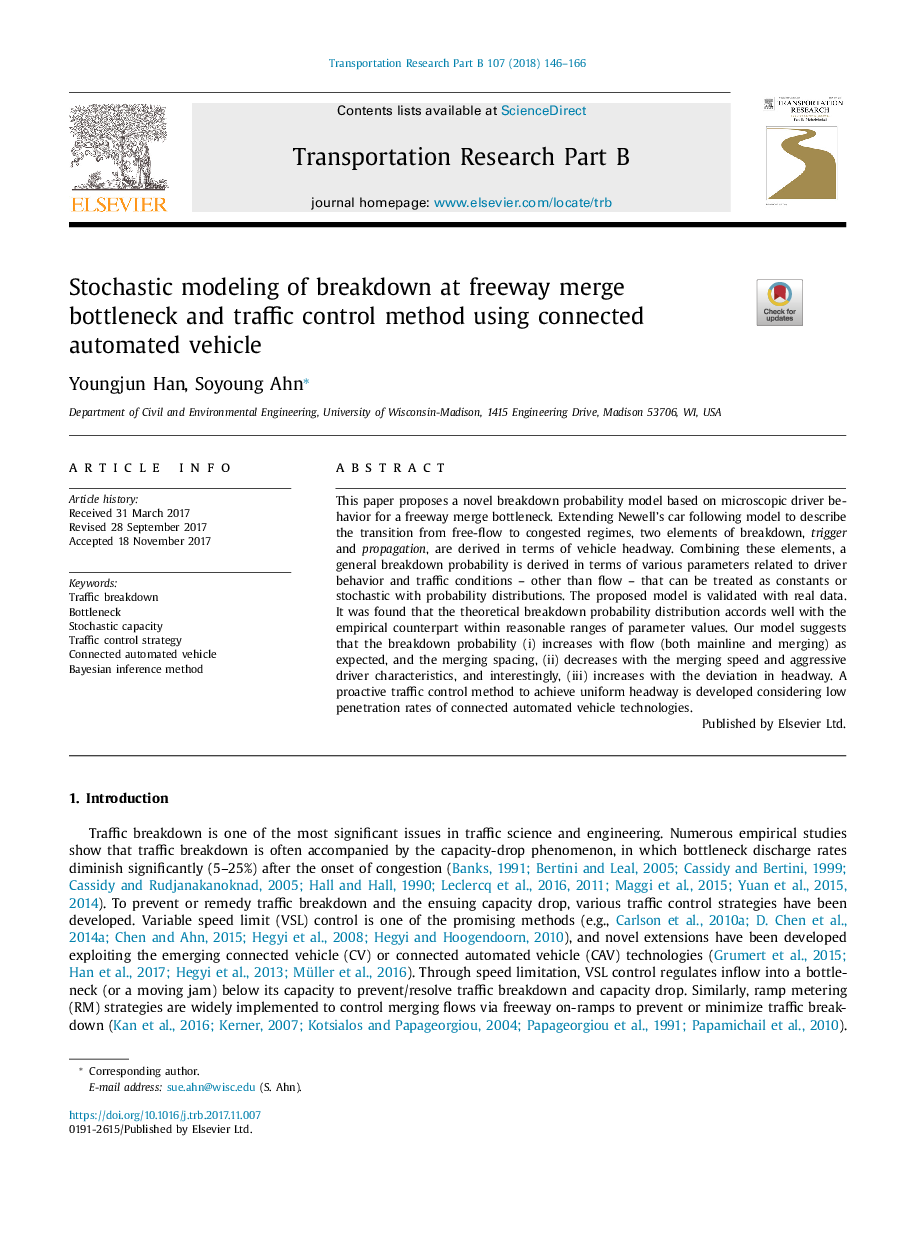| Article ID | Journal | Published Year | Pages | File Type |
|---|---|---|---|---|
| 7539285 | Transportation Research Part B: Methodological | 2018 | 21 Pages |
Abstract
This paper proposes a novel breakdown probability model based on microscopic driver behavior for a freeway merge bottleneck. Extending Newell's car following model to describe the transition from free-flow to congested regimes, two elements of breakdown, trigger and propagation, are derived in terms of vehicle headway. Combining these elements, a general breakdown probability is derived in terms of various parameters related to driver behavior and traffic conditions - other than flow - that can be treated as constants or stochastic with probability distributions. The proposed model is validated with real data. It was found that the theoretical breakdown probability distribution accords well with the empirical counterpart within reasonable ranges of parameter values. Our model suggests that the breakdown probability (i) increases with flow (both mainline and merging) as expected, and the merging spacing, (ii) decreases with the merging speed and aggressive driver characteristics, and interestingly, (iii) increases with the deviation in headway. A proactive traffic control method to achieve uniform headway is developed considering low penetration rates of connected automated vehicle technologies.
Related Topics
Social Sciences and Humanities
Decision Sciences
Management Science and Operations Research
Authors
Youngjun Han, Soyoung Ahn,
